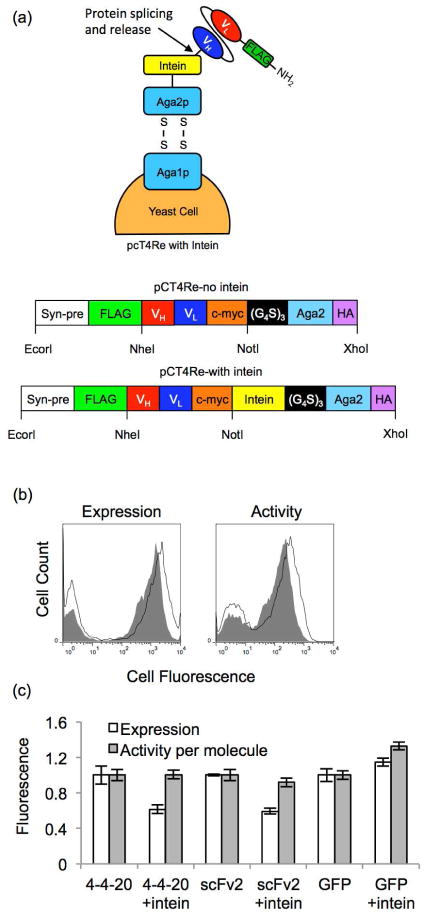Figure 1.
Expression and activity of yeast surface-displayed intein-fusion proteins. (a) Yeast surface display construct pCT4Re anchors the C-terminus of the Aga2p-protein fusions (shown here as Aga2p-scFv fusions) to the surface via disulfide bonds. A FLAG epitope tag is expressed on the N-terminus of the construct to represent full-length expression. In the intein-containing construct, the Mxe GyrA intein is expressed on the C-teminus of the target protein. The non-intein construct is identical except it contains no intein. (b) Using flow cytometry, expression of target proteins in the pCT4Re construct (black line in the histograms) and the pCT4Re construct with intein (solid gray in the histograms) was detected with a FLAG-tag antibody (shown for scFv2). These expression levels corresponded to ~24,000 4-4-20-intein constructs, ~48,000 scFv2-intein constructs, and ~86,000 GFP-intein constructs per yeast. Activity of the proteins in the pcT4Re (black line in the histograms) and the pcT4Re with intein (solid gray in the histograms) constructs was also evaluated by detecting binding to the scFv antigens at saturating concentrations or by measuring GFP fluorescence (shown for scFv2). (c) The geometric mean fluorescence of the FLAG-positive yeast populations was quantified to determine relative expression levels, and these values were normalized to the pCT4Re construct without intein for each protein. Activity per molecule was determined by ratio of the geometric means for activity (binding or fluorescence) to FLAG expression levels, and normalized to the pCT4Re construct without intein. Plotted are the mean ± SD for yeast display results from three independent yeast transformants.

